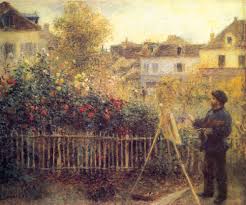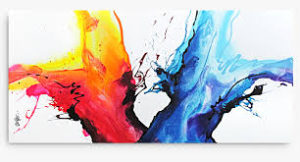
In the world of the arts, there is considerable expectation of those who would wish to be critically and financially successful to adhere to certain rules and formulae in creation of their work. The unknown musicians that submit songs to record companies quickly find that if their music doesn’t follow the patterns of established hit trends, there will be no interest. Or, if there is interest, then any divergence from the successful formula must be changed to conform or the songs and their composers will be cut loose in a hurry. Had record companies applied such conventional logic to the music of The Original Dixieland Jass (yes, Jass) Band, The Beatles or Radiohead, the world would have been cheated of tremendous musical evolution.
Whatever the medium of art, those talented visionaries who have dared to move beyond the accepted conventions are often the ones who are remembered and treasured the most. I’m no expert on the visual arts, but painters such as Monet and Picasso come to mind for their innovations that must have shook the art world in their times. Although there is debate about who invented free verse poetry, Walt Whitman at least popularized it to a great degree in Leaves of Grass. These geniuses and others like them move their medium forward by quantum leaps with ideas most could not conceive.

Of course, not everyone who experiments with their art form comes up with a stroke of genius. Although I hate to think in terms of good or bad because in the critical acclaim and popularity departments, good or bad can defy logic. What is it about an abstract painting that makes someone see it as brilliant? Colors? Perhaps. A hidden message? Plausible. Going along with a formula? Not likely. In any case, someone has to appreciate it for what it is. To make a splash, so to speak, it would help if a critic wrote a widely read article about it. Then, others could “get” it and a movement could begin, lifting the painter out of obscurity and into a place in the sun. Or, the critic could have eaten some bad escargot and missed the gallery show altogether, leaving the artist to struggle in obscurity until he took up painting houses for a living.
Now, here I go with the judgment I just said I would rather avoid. I recently read Nobel Prize winner William Faulkner for the first time. He is known for his experimental style and use of “stream of consciousness” in his stories. He wrote many novels in the 1920’s and ’30’s. I tackled three short novels of his and for the first time I can remember, I stopped reading a book out of dislike and frustration. That “stream of consciousness” led to sentences that lasted a page-and-a-half sometimes. Also, his defiant lack of punctuation served no purpose as far as I could see. Of course, there were many internationally who loved his work and I ultimately will leave it to taste or my lack of appreciation. And I applaud this Faulkner quote, “Let the writer take up surgery or bricklaying if he is interested in technique. There is no mechanical way to get the writing done, no shortcut. The young writer would be a fool to follow a theory.” We have a right to experiment in our writing, our art in general, and in our lives. It makes the whole experience richer.
John Lennon was an experimental writer whose work I admire. He wrote In His Own Write, a compilation of short stories, poems and micro-plays. Here is A Suprise for Little Bobby. “It was little Bobby’s birthmark today and he got a suprise. His very fist was jopped off, (The War) and he got a birthday hook!
“All his life Bobby had wanted his very own hook; and now on his 39th birthday his pwayers had been answered. The only trouble was they had send him a left hook and ebry dobby knows that it was Bobby’s right fist that was missing as it were.
“What to do was not thee only problem: Anyway he jopped off his lest hand and it fitted like a glove. Maybe next year he will get a right hook, who knows?”
Now take this excerpt from Theories on Stuff and Stuff by the unrenowned Froth P. Harrington, Etc. “While supping on wild roons at the foot of the Humidooras, I saw myself run down a mountainside clothed only in Ghandiwear. I was shouting in meter and rhyme decades before rap made a scene. Issuing instructions to the local Tibetan bear clan, I prevented them from falling through the cave portals into the astral plane. I was almost sucked through myself as I chanted mantras I learned from a Banana Republic tapestry salesman, but I reconsidered when I saw the portal was about the size of the eye of a needle. Thank you, roons, for saving me from that embarrassment.” If anything, experimental art should be fun!
I submit that every day of our lives should, on some level at least, be an adventure into the unknown where we can learn from our mistakes and soar to new heights in the process. For life is the ultimate art form, is it not?
Excellent web site. Plenty of useful info here. I’m sending it to some buddies ans additionally sharing in delicious. And obviously, thank you to your sweat!
Simply wish to say your article is as amazing. The clarity in your post
is simply great and i can assume you’re an expert on this subject.
Well with your permission let me to grab your feed to keep updated with forthcoming post.
Thanks a million and please keep up the enjoyable work.
I really like all the points you have made here.